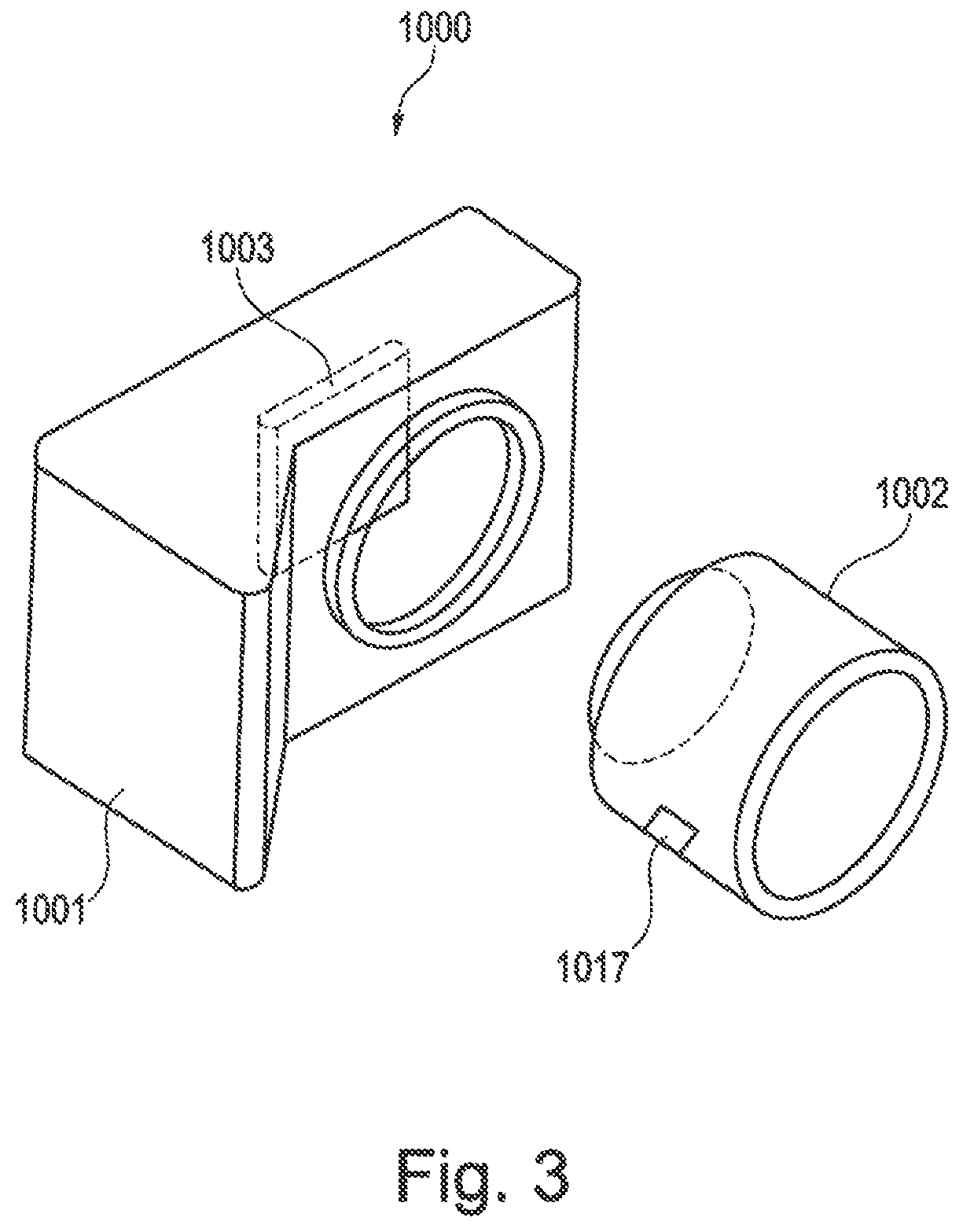Method for adjusting and visualizing parameters for focusing an objective lens on an object and system for implementing the method
a technology of objective lens and parameter setting, which is applied in the field of setting and visualizing parameters of the objective lens of the camera, can solve the problems of small depth of field accompanied by a disadvantage, the risk of moving objects moving out of the depth of field is ever present, and the recording of many times has to be repeated to achieve the effect of better estimation
- Summary
- Abstract
- Description
- Claims
- Application Information
AI Technical Summary
Benefits of technology
Problems solved by technology
Method used
Image
Examples
Embodiment Construction
[0116]Initially, reference is made again to FIG. 1. FIG. 1 shows a schematic illustration of an objective lens 1 of a camera. By way of example, the objective lens 1 has one or more lens elements, which are not illustrated in FIG. 1. Moreover, the objective lens 1 has an aperture unit, which is not illustrated for reasons of clarity in the schematic illustration of FIG. 1. The aperture unit is provided with an adjustable aperture, which has a diameter. For the purposes of focusing the objective lens 1 on an object plane, the lens element or the plurality of lens elements are embodied to be movable along an optical axis OA of the objective lens 1. The object, situated in the object plane, to be imaged with the objective lens 1 is disposed at a recording distance E from the image plane. As already explained above, the relative position and alignment of the depth of field of the objective lens 1 is implemented by calculating a far point distance and a near point distance, wherein the f...
PUM
 Login to View More
Login to View More Abstract
Description
Claims
Application Information
 Login to View More
Login to View More - R&D
- Intellectual Property
- Life Sciences
- Materials
- Tech Scout
- Unparalleled Data Quality
- Higher Quality Content
- 60% Fewer Hallucinations
Browse by: Latest US Patents, China's latest patents, Technical Efficacy Thesaurus, Application Domain, Technology Topic, Popular Technical Reports.
© 2025 PatSnap. All rights reserved.Legal|Privacy policy|Modern Slavery Act Transparency Statement|Sitemap|About US| Contact US: help@patsnap.com



